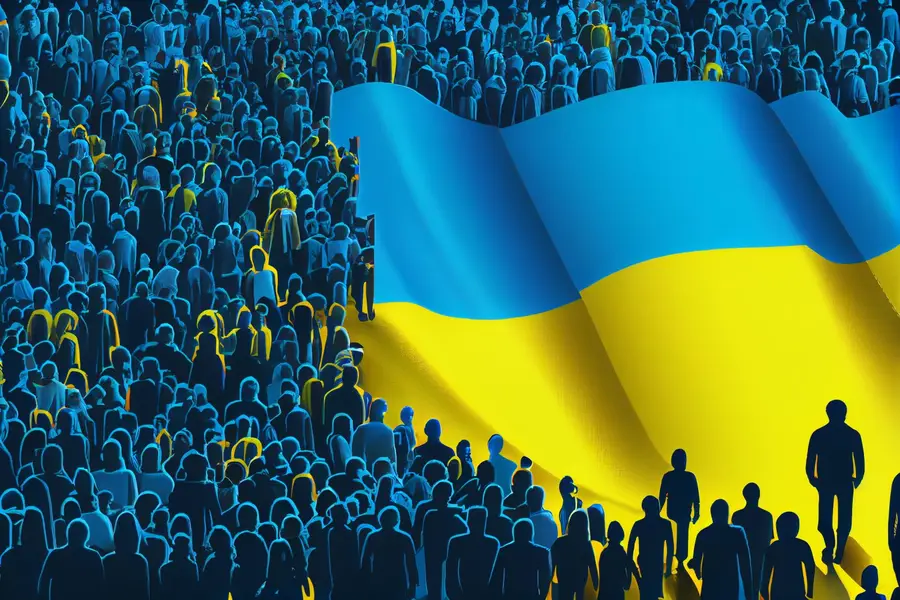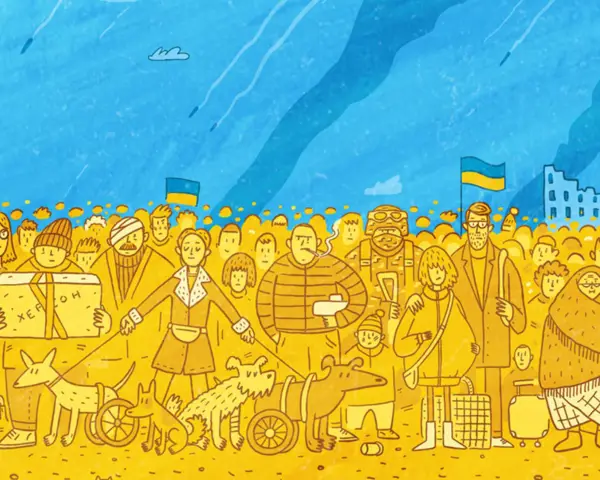
The Perspective of a Ukrainian in the United States
When Russia launched a full-scale invasion of Ukraine in 2022, it sent a shockwave across the world. As a Ukrainian in the United States, my life was split between two worlds. The first was the world of my youth, torn by unimaginable cruelty and destruction where all my family and friends were in imminent danger. The other was where life went on as usual in the United States.
Living in these two worlds, I began noticing differences in perceptions about what was happening in Ukraine. The terror of war and the Ukrainian military’s response was prominent, but another force – no less powerful – had emerged. I was seeing and hearing myriad stories of people mobilizing their energy to support the Ukrainian people. From nonprofits started by Ukrainians in the U.S.—like a friend of mine from college— to stories of those in Ukraine doing everything possible to resist Russian aggression and support one another. The sheer volume and diversity of these personal accounts highlighted how Ukrainians themselves were front and center in financing and supporting their own defense efforts and aid.
Yet in the West, the news of Ukraine was dominated by pictures of grief and destruction, with little acknowledgment of the unprecedented scale at which local civil society had mobilized. I felt compelled to study whether the stories I was hearing were heroic outliers or part of a bigger phenomenon.
Like many in the Ukrainian diaspora, I was looking for ways to channel my energy and skills into something meaningful. I paired up with my colleague Rossana Zetina-Beale, who had international development experience, to study the scale of civil society’s mobilization in wartime Ukraine and understand what it means for the country’s future and reconstruction.
Measuring Ukrainian civil society mobilization
Conducting research during an active war is no easy feat: I was grateful to collaborate with RTI colleagues in humanitarian assistance who welcomed the idea and brought their expertise on how to do so in challenging environments. Given the study’s focus on the rise of citizen finance and volunteerism and what grassroots actors people trust, we “followed the people” by surveying them directly.
To promote trust, responses were anonymous; we shared information about the survey and researchers on the study webpage, and we used a powerful image from Ukrainian artist Oleg Andreyev to garner attention. Respondents were also incentivized to participate in the survey by voting for one of seven Ukrainian-led non-governmental organizations (NGO) to receive a charitable donation from RTI. Based on more than 1,000 responses, RTI made a donation to Razom (“together”), a diaspora-led NGO based in New York City, which received 25 percent of the votes.
Social media sites like Telegram (popular in Eastern Europe) and Facebook were critical for reaching a representative sample at a time when many Ukrainians had been displaced. Over 80 percent of respondents were Ukrainian nationals, with the remainder being diaspora and supporters in other countries. We accounted for any sampling bias by comparing the Ukrainian responses to a demographically representative sample of Ukrainians collected by the Kyiv International Institute of Sociology.
What we found is that Ukrainians, the diaspora, and those who support them were finding ways to meaningfully contribute to the war effort, particularly through unprecedented levels of giving and volunteering.
Ukrainians helping Ukrainians
Since the early 2000s, many Ukrainians have shared a desire to live in a free and democratic society – a desire that has only multiplied in response to Russian aggression. This laid the groundwork for the rapid, large-scale mobilization of civil society in 2022 that has helped shape the trajectory of the war. We found that citizen finance has been a significant aspect of this mobilization, with 86 percent of Ukrainians donating money.
> 0
unique organizations or public figures supported
0 %
of Ukrainians donated money to defense efforts
0 %
of Ukrainian respondents donated time or expertise to the war effort
We identified more than 100 different organizations and individuals whose fundraising efforts were supported, a subset of which received consistent support. Nearly a quarter of these organizations started in 2022, with much of the remainder having started after Russia’s initial invasion in 2014. The strong internal capacity and active social media presence of Ukraine’s NGOs helped them garner trust, rapidly raise money, and scale up emergency response in 2022.
Fundraising recipients supported the most included soldiers and military units, public figures, informal volunteer networks, and NGOs, followed by the Ukrainian government. We found that the organizations the Ukrainian respondents most donated to focused primarily on military support, with 79 percent of Ukrainians donating money to support some form of defense efforts.
The second most common way Ukrainians supported one another was through volunteering. We found that 42 percent of Ukrainian respondents donated their time or expertise to the war effort, with over half of them doing so for the first time in their lives in 2022.
A foundation for Ukrainian democracy and rebuilding
Overall, our study found that the Ukrainian people are funding a large part of their own defense effort. This indicates their continued desire to remain free and democratic. Ukrainian civil society was vibrant and strong well before the launch of total war in 2022, which made it possible to scale up in response to this external threat. Civil society has since played an instrumental role in maintaining Ukrainian democracy and meeting rapidly emerging needs amid war.
This renewed and strengthened civil society will also matter for rebuilding after war. The findings of our study demonstrate a strong interplay between civil society and the public, including civil society actors outside Ukraine like the diaspora. Ukrainians’ giving and volunteering behavior – from Ukrainians in Ukraine to the refugees and the diaspora – demonstrate a high level of trust in civil society actors and the Ukrainian Armed Forces.
Such cohesiveness is a strong sign of the determination of the Ukrainian people and a growing social fabric that needs to be supported as the country builds back and modernizes – a process that is already underway. Civil society deserves a seat at the table – and a formal role – in determining, shaping, and building Ukraine’s democratic future. The international community has provided support to Ukraine’s civil society growth in the past, to great result. This will continue to be an important area for international support in the years ahead.
For a Ukraine-born researcher living in a small coastal city in the U.S., the study confirmed my assumption that my home country is undergoing a very powerful social transformation; it also showed a glimpse into the large network of people supporting Ukraine. What makes this network effective is how informal it is, but I think its long-term effectiveness depends on its cohesiveness in harnessing the power of so many different groups and people who want to help.

Ukraine Civil Society During the War
RTI study finds that growing civic engagement in Ukraine is essential to strengthening the country’s progress toward democratization

